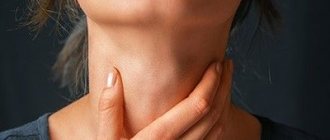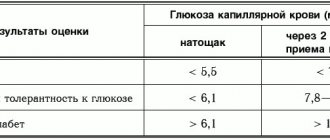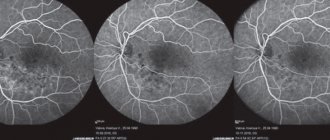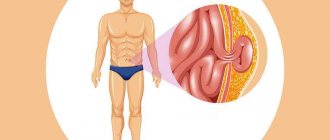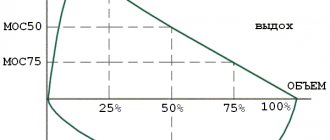An osteopathic doctor is a representative of the new medical specialty “osteopathy” for Russia, with a wide range of competencies. Osteopathic effects can help with various pathological conditions from muscle pain to dysfunction of internal organs.
Age is not a limitation to treatment. An osteopath can provide treatment to both infants and elderly people. The main tool of a doctor is his sensitive hands, the sensitivity of which he develops over many years of practical activity.
Scrupulous knowledge of anatomy and fine sensitivity of the hands are the basis for the effective influence of an osteopath. But this is still not enough! The art lies in the skillful application of techniques for correcting identified body dysfunctions during the healing session.
The human body is a single whole. The osteopath turns his influence to the WHOLE, HEALING a person. Representatives of this medical specialty consider the basis of any disease to be a violation of the body's regulatory mechanisms. To heal, it is necessary to find the “weak link” and restore the lost balance.
An area of pain or discomfort is not always the root cause of imbalance. Illness is the last straw that overflows the body’s patience, a failure of adaptation when the body loses the ability to function normally. An osteopath “unwinds” the tangle of dysfunctions, looks for the cause that led to the disease and acts on it.
What is osteopathy?
There are many competing definitions of osteopathy, formulated in the 19th-21st centuries. Everyone put a special meaning into the definition and was right in their own way. Osteopathy is so multifaceted that it is very difficult to define its essence “in a nutshell”.
You could say that osteopathy is philosophy at your fingertips. Philosophy - because when immersed in osteopathic practice, the doctor’s worldview changes, as he begins to consider the processes occurring in the body holistically, without highlighting the pathology of a particular organ or narrow anatomical area.
At the tips of the fingers - this is a figurative, but at the same time, a very specific expression, since the theory of osteopathic treatment is confirmed empirically when working with a patient. An osteopath's hand is a delicate organ that perceives the physical properties of tissue.
By touching the patient’s body, it is possible to identify areas where the mobility of the structures of the musculoskeletal system, soft tissues and internal organs is impaired, and to understand the history of the formation of dysfunction. Working with the body, the osteopath unwinds the tangle of interconnected functional disorders, creating favorable conditions for restoring freedom of movement, which is necessary for regaining lost health.
Diagnosis of ADHD
Making a diagnosis of attention deficit disorder often causes certain difficulties, because there is no characteristic symptom that would clearly indicate this disease. The main methods for recognizing ADHD are:
- collecting anamnesis (including family history);
- psychological testing.
Also an important component of diagnostics at the present stage is
- osteopathic testing.
The following can be prescribed as auxiliary diagnostic methods:
- Doppler ultrasound (USDG) of the vessels of the head and neck (to assess the blood supply to the brain);
- electroencephalogram (EEG) (to identify foci of convulsive readiness of the cerebral cortex);
- neurological examination.
Who is an osteopath?
To become a certified osteopath in Russia, you need to go through a long professional path. The first stage is a medical university - 6 years of study with a specialty in general medicine. But this is not enough to work as a doctor. Further training in internship or residency is required to obtain a specialization that allows you to engage in practical medical practice. This stage takes 1-2 years.
Only after completing primary specialization in one of the classical clinical disciplines is it possible to master a new specialty - osteopathy. The third stage, which includes the actual training in osteopathy, takes 4 years and ends with the defense of a diploma. Thus, the path from a first-year medical student to a certified osteopathic specialist is 11-12 years.
But this is not the end of learning. An osteopath constantly improves his skills through continuous postgraduate education and participation in international seminars. In our country, an osteopath is, first of all, an experienced doctor with a wide range of clinical knowledge and practical skills, and a wealth of techniques for correcting dysfunctions of the spine, joints of the extremities, soft tissues, and internal organs.
What does an osteopath treat in adults?
If you have been given one of the common diagnoses - osteochondrosis, vegetative dystonia, dyscirculatory encephalopathy - an osteopath will help you understand the problem.
Other common reasons for visiting an osteopath are:
- headache;
- facial pain and dysfunction of the temporomandibular joint;
- neck and back pain;
- muscle pain of various localizations;
- consequences of operations on the spine, chest organs, abdominal cavity, pelvis;
- functional digestive disorders (irritable bowel syndrome, biliary dyskinesia, gastroesophageal reflux);
- pelvic dysfunction (oblique pelvis, twisted pelvis, functional block of the sacroiliac joint).
debunking myths about birth trauma
Today, there are a number of misconceptions about the problem of birth trauma in children, generated mainly by the lack of objective information among parents who are faced with this problem about the causes of birth trauma and the proposed treatment. We will try to clarify this issue and debunk the most popular myths.
Osteopathic sessions are the best method of treating birth trauma
Indeed, many deformities of the skull and spine can be corrected with the help of osteopathy, compression and twisting can be eliminated. But the spasm of the cervical muscles in the suboccipital region after a birth injury is so strong that it cannot be overcome by hand, and therefore the reduction of many subluxations of the atlas is problematic for an osteopath. Also, osteopathic techniques cannot dissolve microscars that form during childbirth due to hemorrhages in the soft tissues of the neck. If the child continues to have increased muscle tone in the neck, pain in the suboccipital region and asymmetrical turns of the head, or NSC in the SHOP and PPCNS, then it is necessary to undergo complex treatment by a vertebroneurologist.
Osteopathy is enough to treat birth trauma
An osteopath does not restore damaged brain tissue in severe trauma (PPCS). An osteopath eliminates various birth deformities of the skull and spine as one aspect of a birth injury, but does not treat the injury as a whole. Treatment of birth trauma should occur in stages, affecting all damage and disorders: elimination of pathological spasm of the cervical muscles, fusion of vertebral ligaments, realignment of displaced vertebrae, resorption of scar tissue and restoration of nerve cells in the brain.
Chiropractors adjust vertebrae following a birth injury
Manual therapy is extremely dangerous for birth injuries of the cervical spine, especially in infants. A chiropractor, seeing external signs of a neck injury, conducts manual sessions using rough jerking techniques. There are cases when, after manual sessions, a child’s neurological symptoms intensify, since during the sessions, vertebral ligaments and neck vessels can be additionally damaged, internal hematomas can form, followed by the formation of scars.
Birth trauma treated with massage
Medical neck massage is often prescribed for birth trauma to relieve pathological spasms of the neck muscles. The cervical spine can be massaged at the final stage of treatment of a birth injury, as well as any injury in general, after realignment of the vertebra and pain relief. At the beginning of the course of treatment, traction and rest are required. Massaging an injured neck is painful for a child, so he cries loudly during it. Even after several courses of massage, spasm of the neck muscles cannot be eliminated, since the spasm occurs reflexively in the presence of displaced vertebrae.
An osteopath and a chiropractor can diagnose a birth injury with their hands, and it is not necessary to take an x-ray
Using your hands you can diagnose spasms of the neck muscles, pain in the vertebral joints, ligaments, and incorrect position of the vertebra. To confirm the diagnosis of subluxation and to monitor the position of the vertebra after treatment, we recommend taking x-rays in three projections. An x-ray gives a complete and objective picture of the condition of the cervical spine BEFORE and AFTER treatment. This is how injuries and ruptures of the ligaments of the cervical vertebrae are detected, which cannot be diagnosed manually. The x-ray also reveals abnormalities in the development of the spine, in which manual therapy is contraindicated, and treatment by an osteopath is ineffective.
Birth trauma does not need to be treated; it goes away with age
Birth trauma as an acute condition passes, but its unresolved consequences appear throughout life, replacing each other. In case of birth trauma, the existing high tone of the cervical muscles, displaced vertebrae, compressed vessels and nerve endings lead to disruption of blood flow at the level of the cervical spine (NSC in the CS) and the brain (PCNS), which determines the presence of neurological complaints. For example, in childhood – poor sleep, hyperactivity, speech disorders, enuresis, etc.; in adults – headaches, increased fatigue, heart rhythm disturbances, etc. Therefore, birth trauma must be treated.
Birth trauma is always manifested by an inclined position of the head (torticollis)
Indeed, the cause of an inclined head position (i.e. torticollis) in 95% of cases is a birth injury. But birth trauma of the cervical spine occurs without torticollis or other visible deformities of the neck or head. Signs indicating a birth injury to the neck include vascular spots on the forehead or back of the head, as well as neurological symptoms that are difficult to treat. To identify a birth injury to the neck without external signs, for children under 3 years of age, we prescribe an ultrasound scan of the neck, an ultrasound scan of the vessels of the neck and brain, and after 3 years, an X-ray of the cervical spine in three projections and an ultrasound scan of the vessels of the neck and brain.
When treating a birth injury in the Shants collar, the neck muscles atrophy
This is indeed a widespread myth, as muscle atrophy is often observed after treatment of arm or leg injuries in a cast. The neck muscles belong to the axial group of muscles and are constantly toned to maintain a vertical position of the head. Atrophy of these muscles can only develop after damage to the nerves through which the muscles receive impulses. Treatment in our traction collar is safe for the muscles, as the neck muscles receive nerve impulses and maintain their tone. In addition, the neck muscles can be trained with special exercises even in a collar, which will ensure the creation of additional good tone of the neck muscles, including in infants.
Foam collar treats birth injury to neck
The foam collar acts as a temporary fixation bandage to stabilize the cervical spine. Treatment of birth trauma in a foam collar is impossible, since it does not provide uniform long-term neck traction, without which the spasmodic neck muscles cannot be relaxed and the displaced vertebra cannot be realigned. To do this, we use a traction (pulling) collar of our own original design, which provides conditions for the successful treatment of birth trauma, namely: elimination of muscle spasm and displacement of the vertebrae, fusion of damaged ligaments.
As can be seen from the examples described above, an objective look at the problem of birth trauma from the point of view of the causes of its occurrence and methods of solution helps the parents of a child who has been diagnosed with this disease to promptly and thoughtfully approach the choice of an effective and safe treatment method.
Types of osteopathy
Globally, osteopathy is divided into three sections: structural, visceral and cranial. The division is based on what body structures the doctor corrects when performing manipulations.
Structural osteopathy
Manipulations aimed at correcting the condition of the structures of the musculoskeletal system (spine, pelvis, joints and muscles of the trunk, upper and lower extremities) are traditionally combined into structural osteopathy.
Visceral osteopathy
Correction of the position and maintenance of mobility of internal organs is carried out using visceral techniques (from the Latin viscera - insides). An osteopath works indirectly with the pelvic organs, abdominal cavity, and chest. The manipulations are carried out gently and painlessly.
Cranial osteopathy
Cranial osteopathy should be discussed in more detail. Cranial (from Latin cranium - skull) means related to the skull. The term craniosacral osteopathy is often used (from the Latin sacrum - sacrum). There is nothing sacred or occult here, the term simply shows the functional and anatomical connections between the skull and sacrum through the dura mater.
The dura mater can be compared to a stocking stretched over the brain, passing over the spinal cord and fixed in the area of the foramen magnum, the first cervical vertebrae and the sacrum. This is a very important structure, the condition of which determines the mobility of the spine and the general condition of a person.
There are many rhythms in our body, respiratory and heart rhythms are well known. Another rhythm is craniosacral. According to one theory, it occurs due to contractions of the walls of the third ventricle of the brain at the time of secretion of cerebrospinal fluid and spreads through the dura mater to all structures of the body.
The osteopath, placing his hands on the occipital bone and sacrum, assesses the parameters of the craniosacral rhythm, areas of additional fixation of the dura mater and those regions of the body where there are restrictions on the spread of the rhythm.
This is one of the methods of osteopathic diagnosis. The amplitude of tissue movement under the hands of an osteopath is calculated in micrometers. The ability of humans to sense such small fluctuations is a matter of heated debate.
However, today there are fundamental studies that prove not only the presence of craniosacral rhythm, but also the possibility of perceiving its main characteristics by the hands of an osteopath.
Thus, cranial (or craniosacral) osteopathy is the expert’s jewelry work, based on deep knowledge of anatomy and developed sensitivity of the hands, and the dura mater is a conductor of craniosacral rhythm and an indicator of the functional state of the body.
causes and symptoms of birth trauma
Birth trauma occurs during the passage of a child through the birth canal, if any unsynchronized action occurs in the mother’s body at the time of birth.
The process of childbirth is greatly influenced by the anatomical features of the mother and child and their state of health. If any abnormalities occur during childbirth, failure to provide obstetric care can lead to injury. On the other hand, any medical impact also poses a risk of developing injury to the baby: drugs that stimulate labor, pressure on the abdomen during pushing, the application of obstetric forceps, a Caesarean section.
Even during normal physiological childbirth, the baby, passing through the birth canal, experiences enormous stress. In a newborn, the muscles and ligaments of the neck are very weak, so it is very easy to injure them during stress during childbirth. The use of obstetric aid increases the incidence of injuries to the cervical spine, but even without medical intervention, the risk of birth injury remains.
Regardless of the severity of the birth injury, the existing damage will certainly have consequences. The worst option is death. In this case, a diagnosis of sudden death syndrome is made. The cause of death is the progression of scarring of the injury site in the soft tissues of the neck, which affects the vital centers of breathing and heartbeat, which is incompatible with life.
Quite severe consequences of birth trauma can be the development of cerebral palsy (CP), paresis or paralysis of the limbs.
Sometimes there are no obvious consequences of the injury, and it does not manifest itself for several months or years. This does not mean that the child is absolutely healthy. When the cervical spine is damaged, vertebral displacement often occurs and protective muscle spasm develops. As a result of birth trauma, cerebral blood flow begins to suffer, and at a certain time the baby begins to show the consequences of the trauma suffered from obstructed cerebral blood flow.
In the first days and months of life, a violation of cerebral blood flow manifests itself in the form of sudden short-term stops in breathing (from the first day), in the form of trembling of the chin, arms or legs, and irregular heart rhythm. The child is restless and often cries a lot, sleeps poorly, has high or low muscle tone in the arms or legs, squint, and a clearly noticeable short neck. Some children have delays in motor development.
After a year, the following problems may arise: delayed motor and emotional development, frequent hysterics, crying, hyperactivity or lethargy, attention deficit, poor memory. Such children may have an increased head size, deformations of the skull and thoracic region, mental abnormalities, convulsions (episyndrome), and paresis of the limbs.
Some consequences appear only in preschool and school age. At that time, few people associate them with the trauma received at birth. These consequences include: dysarthria, impaired fine motor skills, enuresis, headaches, vegetative-vascular dystonia (VSD), increased intracranial pressure, neuroses. At this age, as a result of a birth injury, problems with the spine (scoliosis, poor posture), clubfoot, flat feet, and different leg lengths appear. Consequences also include problems with the immune system, persistent allergic reactions, and diseases of the ENT organs.
What is the difference between an osteopath and a chiropractor?
An osteopath differs from a chiropractor in his worldview. For a chiropractor, the human body is a mechanism consisting of many gears. If one of the parts stops working, then it needs to be set and returned to its place.
This mechanistic approach sometimes pays off, especially if a person, having made a sudden or awkward movement, feels acute pain. In this case, the cause of pain is a functional block of the joint of the spine or the joint of the sacrum and pelvis (the so-called sacroiliac joint), when movement in the joints of the musculoskeletal structures becomes sharply limited.
The chiropractor, having performed the mobilization technique, returns mobility to the joint and effectively copes with pain. However, in most cases, the situation is much more complicated.
An osteopath, unlike a chiropractor, is interested in the reason for the formation of a functional block. It is important for him to find out which weak link in the body led to pain and limitation of movement. After all, in ordinary life we make many complex and not always familiar movements, but we do not always experience pain.
It's all about the adaptation of our body to the motor tasks that life sets for us. If the musculoskeletal system functions optimally, then there are no conditions for the formation of pain and limitation of movements in the joints.
Our body stores many dysfunctions: the consequences of surgical interventions, injuries, emotional problems, “packed” into spasming muscles, but we do not notice this while the body has compensatory reserves.
As a rule, the appearance of pain means a breakdown of adaptation mechanisms, a cry from our body for help. If we suppress pain with medications or use the services of a chiropractor, this will not be a global solution to the problem.
For effective treatment, it is necessary to find out the reason why the body could not cope with the load. It is the osteopath who is able to conduct an “investigation” and determine the cause of the failure of adaptation and the appearance of pain. An osteopath works on the cause, not the effect.
Osteopathic techniques
Myofascial release techniques relieve tension from muscles, ligaments and fascial sheaths. The osteopath uses pressure, stretching and twisting to relieve spasm: pain and swelling go away.
Muscle-energetic techniques involve the influence of both the osteopath and the patient himself. The specialist fixes the vertebra or other bone and helps the patient flex and straighten muscle groups.
General articulation techniques help relieve restrictions in joint movement and restore the correct alignment of bones. Outwardly, this resembles physical therapy, but the effect of such techniques is greater. When performed correctly, thanks to articulation, even gross displacements of the vertebrae and bones can be eliminated.
Contraindications to osteopathic treatment
As with any therapeutic effect, there are diseases and conditions in which osteopathic manipulation is contraindicated.
- Malignant neoplasms. Any osteopathic effect in this case could potentially provoke further spread of the tumor.
- Fractures. In this case, osteopathic effects on tissue can be carried out after adequate comparison of bone fragments and immobilization of a limb or body segment.
- Fever (increased body temperature above 38 degrees Celsius). Until the cause of the fever is determined, osteopathic treatment is not indicated.
- Mental illnesses. Conditions when a patient, due to a psychiatric illness, can be dangerous to himself and others. In this case, first of all, the help of a psychiatrist is required.
- Active reluctance of the patient to undergo osteopathic treatment. If an adult patient is brought to an appointment with an osteopath by relatives and insists on osteopathic correction, and the patient is extremely negative, then there is no point in carrying out the procedure. A person must take a conscious approach to his health, so the decision to carry out treatment must come from him.
Causes of attention deficit hyperactivity disorder in children
Researchers do not have a consensus on the etiology (root cause) of the disease, but name a number of factors that can lead to the disease:
- Genetic predisposition;
- Disorders of intrauterine development that occur as a result of unfavorable factors during pregnancy (including smoking, drinking alcohol, drugs, taking a number of medications by the mother).
- complications during childbirth leading to birth injuries.
- the presence of severe conflicts in the family, alcoholism, drug addiction, and a criminal environment.
- increasing the importance of visual culture in society, leading to a decrease in speech self-regulation (that is, one of the factors of conscious management of one’s own activities).
How does an osteopath work?
Unlike physiotherapy, where a course of 10-15 daily procedures is required to achieve a lasting therapeutic effect, osteopathic treatment is carried out no more than once a week, and the course can consist of 3-4 procedures. As a rule, an acute situation within the competence of an osteopath can be dealt with in several sessions.
The osteopath explains the features of the motor regime and gives a set of home exercises to consolidate the effect of its influence. In the case of a chronic disease, osteopathy sessions can be carried out once a month for a long period.
There are no uniform recommendations for the duration of treatment and the frequency of sessions, since the medical history and life history of each person are individual. The osteopath has more than 2,500 techniques and many years of clinical experience, which allows him to provide effective assistance and determine the course of treatment depending on the complexity of the problem and the patient’s adaptive reserves.
Prevention of osteoporosis
Restoring the structure of bone tissue requires the following measures:
- healthy lifestyle;
- proper nutrition;
- consumption of drugs that contain easily digestible forms of calcium salts;
- physical education classes;
- sunbathing; getting rid of chronic diseases that cause impaired calcium absorption;
- regular medical supervision.
Remember that it is better to prevent the development of the disease than to get rid of its manifestations through therapeutic measures. Stick to proper nutrition, exercise regularly, and give up bad habits. People over 45 years of age are recommended to take calcium-containing supplements.
Preparing for treatment or what to take with you to an appointment with an osteopath?
Medical documentation. Examinations of other specialists, results of laboratory and instrumental research methods. If you have had an X-ray, computed tomography or magnetic resonance imaging scan, it is advisable to take with you not only the specialist’s report, but also the images themselves: on film or CD.
Of course, an osteopath carries out specific diagnostics of existing dysfunctions, but is not a psychic who can feel with his hands any even slightest deviation from the norm. Therefore, data from additional research methods can be useful in diagnosis and determining the tactics of osteopathic treatment.
- Comfortable underwear. You should be prepared to remove your outer clothing during the session, even if you have a headache or foot pain. The osteopath evaluates the entire body globally in order to determine the leading dysfunction that requires correction.
- Orthopedic insoles, orthodontic mouth guards. If you use orthopedic insoles, heel pads, other orthoses, or orthodontic mouthguards, BE SURE to take them with you to your doctor’s appointment. The osteopath will need them to conduct specific tests and determine the adequacy of the orthosis.
Is the osteopath a charlatan or a doctor?
Modern medicine, trying to prove the effectiveness and safety of any effect, from pharmacological to psychological, and osteopathy speak different languages, so it is difficult for them to understand each other.
Imagine if we were comparing meters and seconds. Can you say that 5 meters is more than 4 seconds? Of course, this seems absurd. The same difficulties are faced by an expert trying to compare the effectiveness of an anesthetic drug and an osteopathic procedure.
The drug works at the biochemical micro level, and the osteopath at the organismal macro level. The medicine acts on receptors, suppressing or activating certain metabolic or neurotransmitter systems. The osteopath returns mobility to the body, exerting a local and global effect not only on the musculoskeletal system, but also indirectly on the neuroendocrine regulation of the body’s activities.
We can simply say that the medicine has an “internal” effect, and the osteopath has an “external” effect. Evidence-based medicine can assess impact if conditions are standardized.
To a certain extent, this is possible in the case of drug therapy (you can control the dose, frequency of administration, concentration of the drug in the blood), hardware methods of influence (standard stimulation parameters adjusted using the device scale), but it is completely impossible in relation to osteopathy.
The osteopath's hands and clinical experience are his main tools, the impact of which is difficult to measure objectively using currently available methods. The main criterion for a doctor’s effectiveness can be formulated in three words: “the patient feels better.”
But such an unscientific formulation does not suit the medical community. We need numbers, scales, and reliability. Modern osteopathy is trying to “prove” its right to be considered evidence-based; it wants to learn to speak an impartial mathematical language.
Whether this should be done is a big question. After all, a person cannot be squeezed into the framework of formulas and rigid standards. For drug therapy and instrumental methods of influence, evidence-based medicine is necessary. For osteopathy, the principles of evidence do not work, so you should not compare meters and seconds.
Signs of a good osteopath
How to find a good osteopath in a big city? Many rely on the recommendations of friends, acquaintances, and colleagues, because an important criterion for choosing a specialist is positive reviews of his work. If you have already decided who you want to entrust your health to, then it is worth checking whether this specialist is included in the register of certified osteopathic doctors (www.osteopathy-official.ru). The presence of a doctor on this list confirms the high level of his education and is a guarantee of the provision of qualified care.
Signs of osteoporosis
The first manifestations of the disease are considered to be:
- decreased bone integrity;
- depression of intervertebral discs;
- vertebral deformity.
These signs are determined during diagnosis in a hospital using x-rays or ultrasound. Ultrasound can detect structural changes when tissue integrity decreases by 5%. If it is not possible to undergo an examination, then you should pay attention to the following indirect signs:
- pain in the back (lumbar or thoracic);
- the nature of the pain can have different intensity, but it does not cause severe discomfort, only after physical activity the pain can become stronger;
- fatigue, weakness, rest takes longer;
- leg cramps, palpitations.
Having determined the signs of the disease, it remains to understand which doctor treats osteoporosis in older women. Traumatologists and orthopedists note that in older age, bones grow together very slowly. Therefore, if you experience the slightest fracture or pain, you should consult a doctor.
Reviews about the work of an osteopath
Patient reviews are one of the important criteria for assessing the level of a specialist. If scales and numbers are important for scientific articles, then for a practicing doctor, feedback from patients is the main indicator of the effectiveness of his work. Positive reviews confirm the high professional level of the osteopath.
Negative reviews are important for a doctor to work on his shortcomings, and for a patient they serve as a reason to think about whether it is worth contacting a specialist. Only based on the effectiveness of the manipulations performed, an osteopath can improve in his professional activities. The patient will always tell the doctor whether he is on the right track.
Forms of osteoporosis
Osteoporosis can be primary or secondary. Primary manifests itself in the following forms:
- postmenopausal;
- senile;
- juvenile
The last two varieties are dominant. The highest bone tissue density in humans is observed at the age of 20-35, after which it begins to shrink. By the age of 75, we lose up to half of our tissue mass. An irreversible consequence of the senile form of the disease is a fracture of the femoral neck. A person stops moving and spends all the time in a lying position, and this is fraught with heart failure. It is not difficult to understand who treats osteoporosis and which doctor deals with the problem. A traumatologist or orthopedist will make a diagnosis and prescribe a certain course of treatment. The secondary form of the disease manifests itself in the presence of disruptions in the body: hormonal disorders, diseases of the endocrine system, arthritis. Experts note that malfunctions in the lymphatic system can also lead to a secondary form of the disease.






